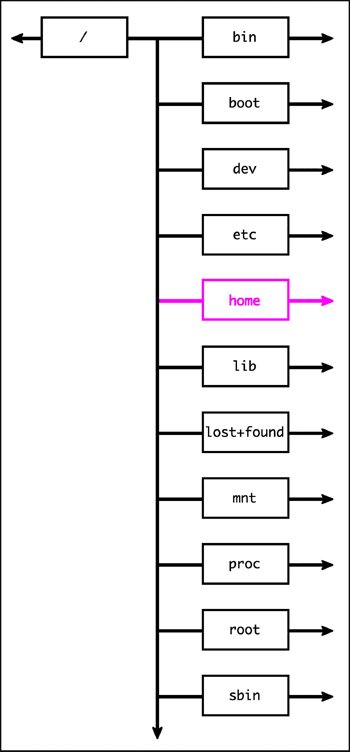Listing Directories and Files with ls
Listing Directories and Files with lsYour Unix system is made up of directories and files that store a variety of information, including setup information, configuration settings, programs, and options, as well as other files and directories. You might think of your Unix system as being a tree (tree roots, actually), with subdirectories stemming from higher-level directories. As shown in Figure 1.6, all of these files and directories reside within the root directory, which contains everything in the system. Figure 1.6. All files and directories are nested within the root directory, which serves to contain everything in the system. Using the ls command, you can find out exactly what's in your Unix system and thereby find out what's available to you. You can list the files and directories of a directory that you're currently in or a directory that you specify. To list the files and directories of the directory you're in:
Code Listing 1.2. Use ls by itself to list the files and directories of the directory you're in.
To list the files and directories of a specified directory:
Code Listing 1.3. Use ls with the name of a directory to list the contents of that directory (/bin, in this case).
|
EAN: 2147483647
Pages: 251
- Article 332 Mineral-Insulated, Metal-Sheathed Cable Type MI
- Article 400: Flexible Cords and Cables
- Article 408: Switchboards and Panelboards
- Example No. D1(a) One-Family Dwelling
- Example No. D2(c) Optional Calculation for One-Family Dwelling with Heat Pump(Single-Phase, 240/120-Volt Service) (See 220.82)

 testfile testlink@ tmp/ [jdoe@frazz jdoe]$
testfile testlink@ tmp/ [jdoe@frazz jdoe]$  Tips
Tips